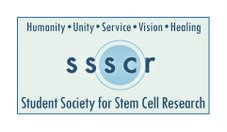Shanghai, China -
Liver failure is a major cause of moribidity and mortality, cited by some as the 7-10th largest cause of death. The possibility of stem cell therapy for liver failure is particularly attractive since intravenous administration of cells usually results in deposition into the liver.
Animal studies have demonstrated that endogenous hepatic stem cells (oval cells) play a role in liver regeneration in a wnt/beta-catenin dependent manner. Furthermore, inhibiting the autocrine stem cell inhibitor TGF-beta results in augmentation of liver regeneration subsequent to partial hepatectomy.
Human studies have demonstrated that intravenous administration of autologous bone marrow derived stem cells results in clinical benefit in a statistically significant manner.
One of the fundamental questions surrounding stem cell therapy for liver disease revolves around the mechanisms of liver regeneration. On the one hand, there is evidence that various stem cells may differentiate into hepatocytes. This would not be a far stretch since the oval cell, which is one of the liver stem cells, expresses the hematopoietic stem cell marker CD34 (Crosby et al. Human hepatic stem-like cells isolated using c-kit or CD34 can differentiate into biliary epithelium. Gastroenterology. 2001 Feb;120(2):534-44). Additionally, studies have demonstrated that human cord blood and bone marrow CD34 cells can differentiate into hepatic-like cells and induce benefit in animal models of liver failure.
However, numerous scientists believe that "transdifferentiation" is an impossibility. For example, Dr Irv Weissman has been quoted as saying on many occasions that "a hematopoietic stem cells will only make blood cells."
Although we do not necessarily agree with the Stanford Professor, we are open to other ways in which stem cells may mediate therapeutic effects besides becoming the target tissue. For example, if one thinks philosophically, the most clinically advanced (non-hematopoietic) stem cell type is the mesenchymal stem cell which is in Phase III for treatment of graft versus host by the company Osiris. This lead indication has nothing to do with stem cells differentiating into new tissue, but merely is leveraging the potent immunomodulatory effects of mesenchymal stem cells. Could it be that stem cells also may mediate non-transdifferentiation therapeutic effects in liver failure? This is one of the questions that has been recently studied.
Liver fibrosis, whether caused by viral infection, alcoholism, or toxins, all involves overtaking of functional tissue by scar tissue. One of the key generators of the scar tissue is the stellate cell. These cells have a natural role in storage of fat, as well as activation of various innate immune cells in the liver such as NKT cells. During liver damage stellate cells become activated and start secreting mediators that induce apoptosis in hepatocytes. Additionally the stellate cells produce large amounts of collagen and deposit extracellular matrix that ends up causing scar tissue. Inhibition of stellate cell activity by PPAR agonists has been shown to inhibit fibrosis. Additionally, mesenchymal stem cells have been demonstrated to inhibit stellate cell activation.
In a recent paper (Deng et al. Hepatic stellate cells modulate the differentiation of bone marrow mesenchymal stem cells into hepatocyte-like cells. J Cell Physiol 2008 May 15) the interaction between stellate cells and mesenchymal stem cells (rat bone marrow derived) was investigated. Specifically, the investigators asked the question of whether activated versus unactivated stellate cells induced mesenchymal stem cells to produce hepatic proteins.
In contrast to mesenchymal stem cells cultured with unactivated stellate cells, mesenchymals cultured with activated stellate cells expressed a morphology similar to hepatocytes. Additionally, the investigators reported that the "transdifferentiated" mesenchymal stem cells expressed numerous hepatic markers.
These data support a bi-directional interaction between mesenchymal stem cells and stellate cells. While the previous paper we discussed stated that mesenchymal stem cells can inhibit activated stellate cells, this paper states that activated stellate cells may induce differentiation of mesenchymal stem cells into hepatocytes. So perhaps what happens in liver failure is that the activated stellate cell "needs" mesenchymal stem cells to trans-differentiate into new hepatocytes, when it runs out of them, then it starts producing collagen and damaging its environment. This notion is supported by the papers suggesting infusion of stem cells inhibits fibrosis of the liver.












